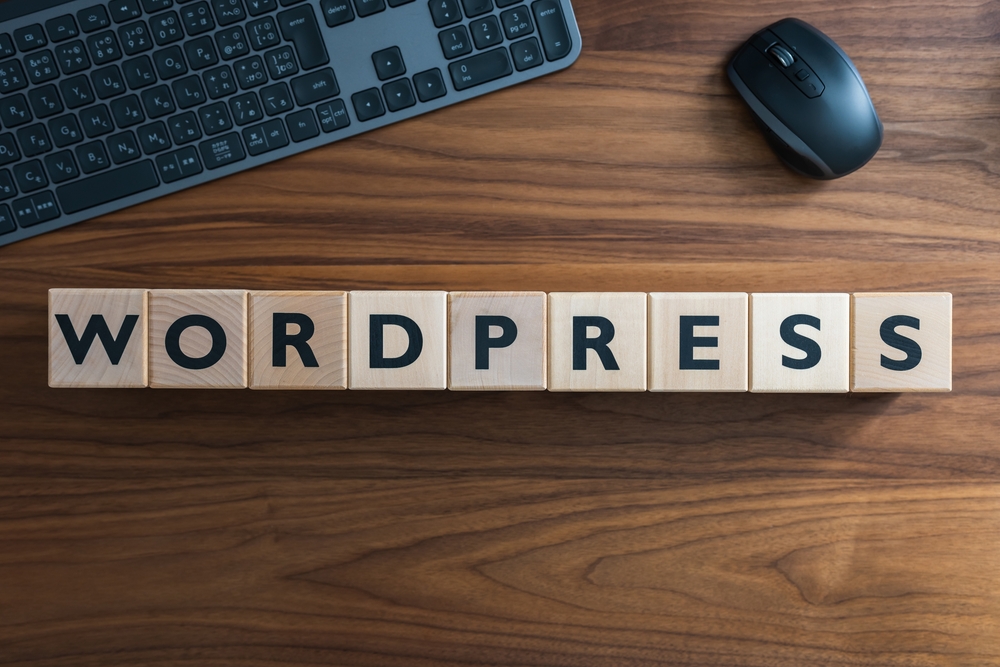
WordPress (WP) is undeniably the most popular content management system (CMS) in the world. Powering over 35% of all websites on the internet, it has become the go-to choice for everyone from bloggers to large enterprises. With its user-friendly interface and extensive plugin ecosystem, WordPress (the blogging platform) offers countless customization options to make your website truly unique. In this article, we will delve into essential customization and maintenance tips to help you master WordPress (or WP) and take full advantage of its capabilities.
Customize Your ThemeChoosing the right theme is one of the first steps towards customizing your WordPress (the platform for bloggers) website. With thousands of free and premium themes available, you can easily find one that aligns with your brand or industry. However, sometimes a little tweaking is required to make it truly yours.
1. Customize the Header and Footer: Most themes offer options to customize the header and footer sections. From adding your logo and social media icons to inserting custom code snippets such as analytics tracking, customizing these sections can significantly enhance your website's branding and functionality.
2. Modify Color Schemes: Many themes allow you to change the color scheme, giving your website a personalized touch. Experiment with different combinations to find the one that resonates with your brand identity.
3. Utilize Widgets and Sidebars: Widgets are powerful tools that can be easily added to the sidebar or footer of your website. From displaying recent posts to embedding social media feeds, widgets offer a plethora of options for enhancing your website's functionality.
Install Essential PluginsWordPress plugins are addons that extend the functionality of your website. With over 55,000 plugins available in the WordPress plugin repository, you can easily find plugins for almost any feature or functionality you desire. Here are some essential plugins that every WordPress website should consider:
4. Yoast SEO: An SEO plugin that helps optimize your website for search engines. It provides valuable insights and recommendations to improve your on-page SEO and helps you rank higher in search engine results.
5. W3 Total Cache: A caching plugin that improves website performance by caching static content, reducing server load, and delivering content faster to your visitors. Page load speed is crucial for user experience and search engine rankings.
6. Akismet: A plugin that protects your website from spam comments. Spam comments can harm your website's reputation and impact user experience. Akismet filters and blocks spam comments automatically, saving you time and ensuring a safer environment for your visitors.
Maintain a Healthy WebsiteRegular maintenance is essential to keep your WordPress website running smoothly and securely. Neglecting maintenance tasks can result in security vulnerabilities, performance issues, and outdated technology. Implement the following maintenance tips to ensure your website stays in top shape:
7. Update WordPress Core, Theme, and Plugins: Keeping your website up to date is crucial for security and compatibility. Regularly check for updates and install them promptly. Remember to take a backup before performing any updates.
8. Monitor Website Security: WordPress security should not be taken lightly. Install a security plugin and configure it to protect your website from malicious attacks. Regularly scan for malware and implement strong security measures such as complex passwords and two-factor authentication.
9. Optimize Database: Over time, your WordPress database can accumulate unnecessary data, affecting website performance. Use a database optimization plugin to clean up and optimize your database, improving website speed and efficiency.
10. Backup Your Website: Accidents happen, and it's important to have a backup plan. Regularly backup your website to an off-site location, such as cloud storage or a separate server. This ensures that if anything goes wrong, you can quickly restore your website to a previous working state.
Frequently Asked Questions
Q1. Can I switch themes without losing my content?A1. Yes, you can switch themes without losing your content. However, some customizations may not carry over to the new theme, so you may need to adjust certain settings or widgets.
Q2. How often should I update my plugins and themes?
A2. It is recommended to update plugins and themes as soon as updates are available. Regular updates ensure security patches and new features are implemented, reducing the risk of vulnerabilities and compatibility issues.
Q3. Are free themes and plugins safe to use?
A3. While the vast majority of free themes and plugins are safe, it is crucial to choose them from reputable sources such as the WordPress.org Theme and Plugin Directories. Read user reviews and check the last update date before installing.
Q4. How can I improve my website's speed?
A4. Website speed depends on various factors, including hosting, caching, and image optimization. Consider using a reliable hosting provider, implementing a caching plugin, and optimizing your images using compression techniques.
Q5. How do I secure my WordPress website?
A5. To secure your WordPress website, use strong passwords, restrict access to critical files using .htaccess, install a security plugin, and regularly update your WordPress installation, theme, and plugins to fix any known vulnerabilities.
Conclusion
WordPress offers endless possibilities for customization and maintenance. By customizing your theme, installing essential plugins, and performing regular maintenance tasks, you can master WordPress and create a site that reflects your brand identity while ensuring its security and performance. Stay up to date with the latest trends and keep exploring the vast WordPress community to unlock the full potential of this powerful CMS.
Other useful resources
- https://www.wordpress24plus.com/wordpress-tools-directory/wordpress-plugins/
- https://www.wordpress24plus.com